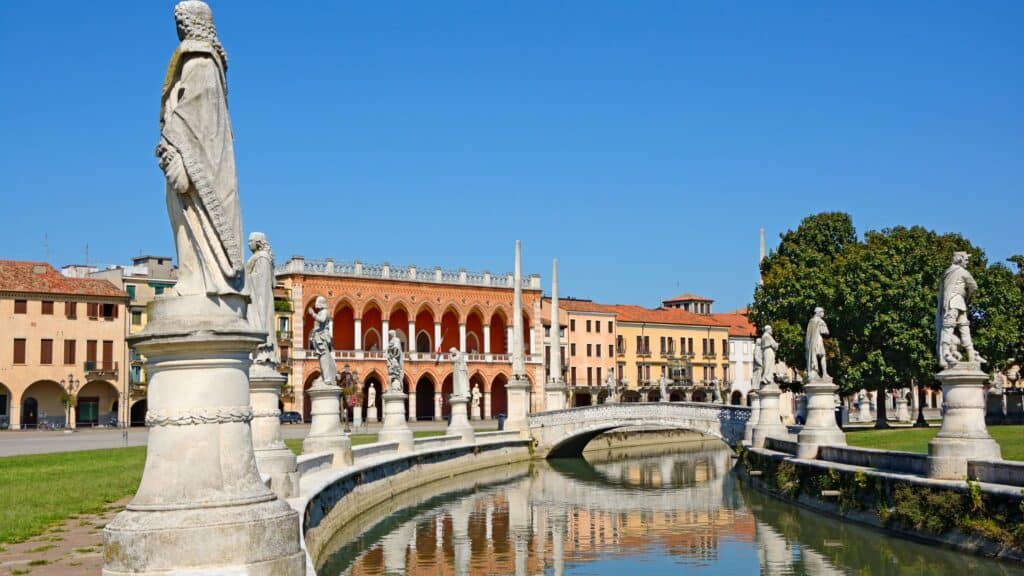What if you could visit five European cities without the stress of missed connections or budget surprises?
Most travelers attempt multi-city European trips with scattered bookings across dozens of websites.
They jump between flight comparisons, hotel searches, and activity bookings without any coordination. The result is paying premium prices for travel that is poorly timed and inconveniently located.
Smart planning changes everything. A quality Europe trip planner connects your flights, accommodations, and activities into one cohesive journey.
It saves money while eliminating common travel headaches that ruin vacations.
This guide reveals which tools actually work and how to use them effectively. You’ll learn proven strategies for building realistic itineraries that flow smoothly.
Ready to plan your European adventure the smart way?
Best Trip Planner Tools I’d Recommend
I’ve tested dozens of European trip planners, each excelling at specific tasks. They streamline everything into one view, turning scattered bookings into a single smooth itinerary.
1. Google Travel

Start here if you’re new to trip planning. Google Travel works with your existing Gmail account, so it feels familiar from day one.
The best part? It automatically grabs your booking confirmations from email and builds your itinerary without any typing required.
Smart Integration: Your flight gets delayed? Google Travel updates your schedule automatically and suggests how to adjust your day.
Don’t expect advanced train booking features, though. Google focuses on flights and hotels primarily, leaving train travel somewhat basic.
Best for: First-time European travelers who prefer familiar interfaces and want everything centralized without learning new systems.
2. Rome2Rio
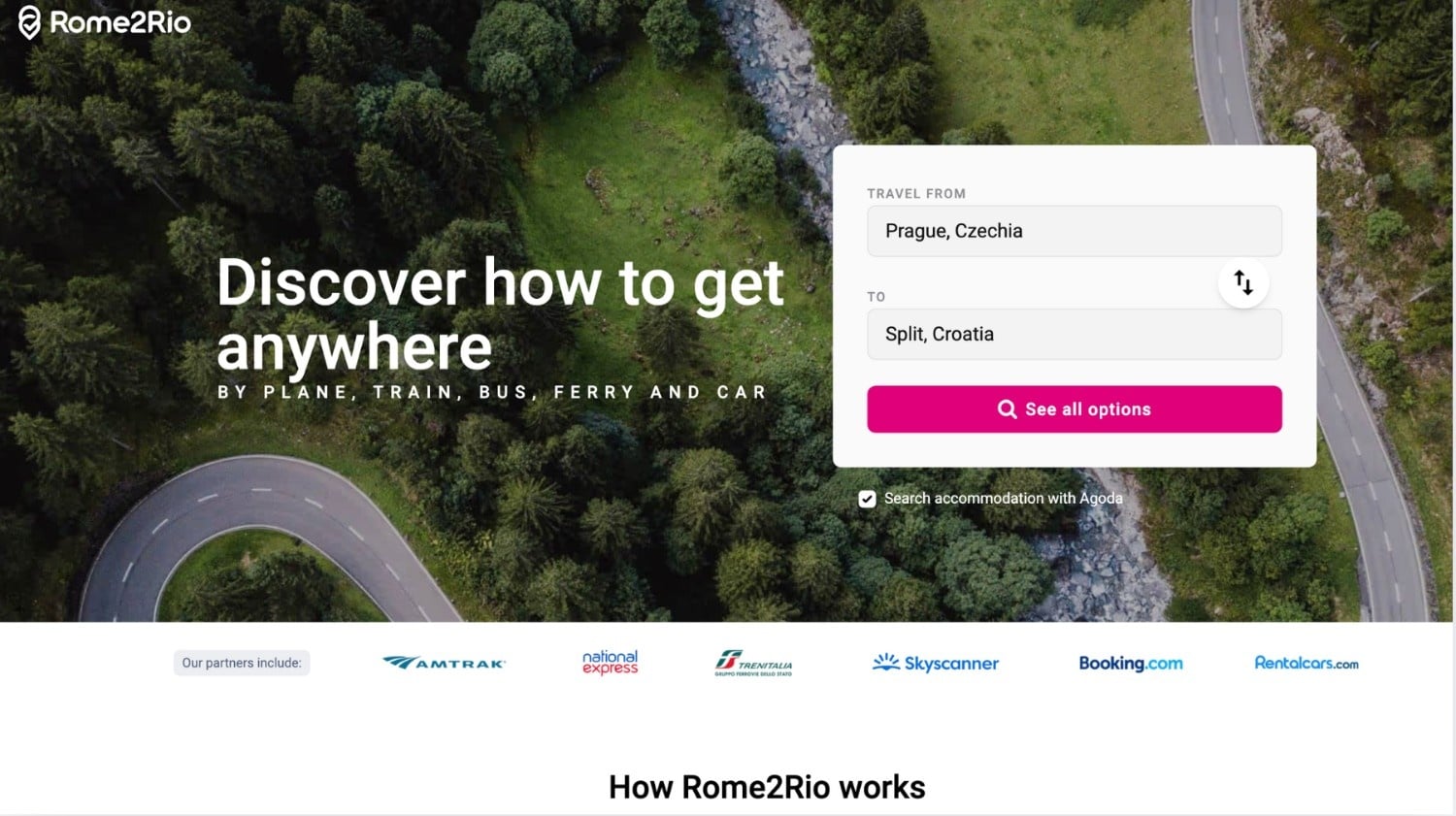
This tool becomes invaluable when you need to get from Prague to Split or any other tricky European route combination.
Rome2Rio shows you transport options you didn’t know existed. That overnight ferry from Italy to Greece? It’s probably cheaper than flying.
Hidden Routes: You’ll discover overnight buses across Eastern Europe that cost just €20 while flights for the same route run €200 or more.
Skip Rome2Rio if you need hotel bookings or restaurant suggestions. It focuses purely on getting you between destinations efficiently.
Best for: Budget-conscious travelers tackling unconventional routes between smaller cities that major platforms often miss completely.
3. TripIt

Perfect for travelers with confirmations scattered across ten different inboxes, and need them consolidated into one master plan.
Just forward your booking emails to TripIt and watch them convert into a clean, professional itinerary automatically.
Business Focus: The formatting looks so professional that many companies use TripIt for corporate travel documentation and expense reports.
Avoid the free version if you want real-time flight alerts. You’ll need TripIt Pro for the features that actually matter during travel disruptions.
Best for: Busy professionals who book through various platforms and need organized, professional-looking itineraries for business purposes.
4. Wanderlog
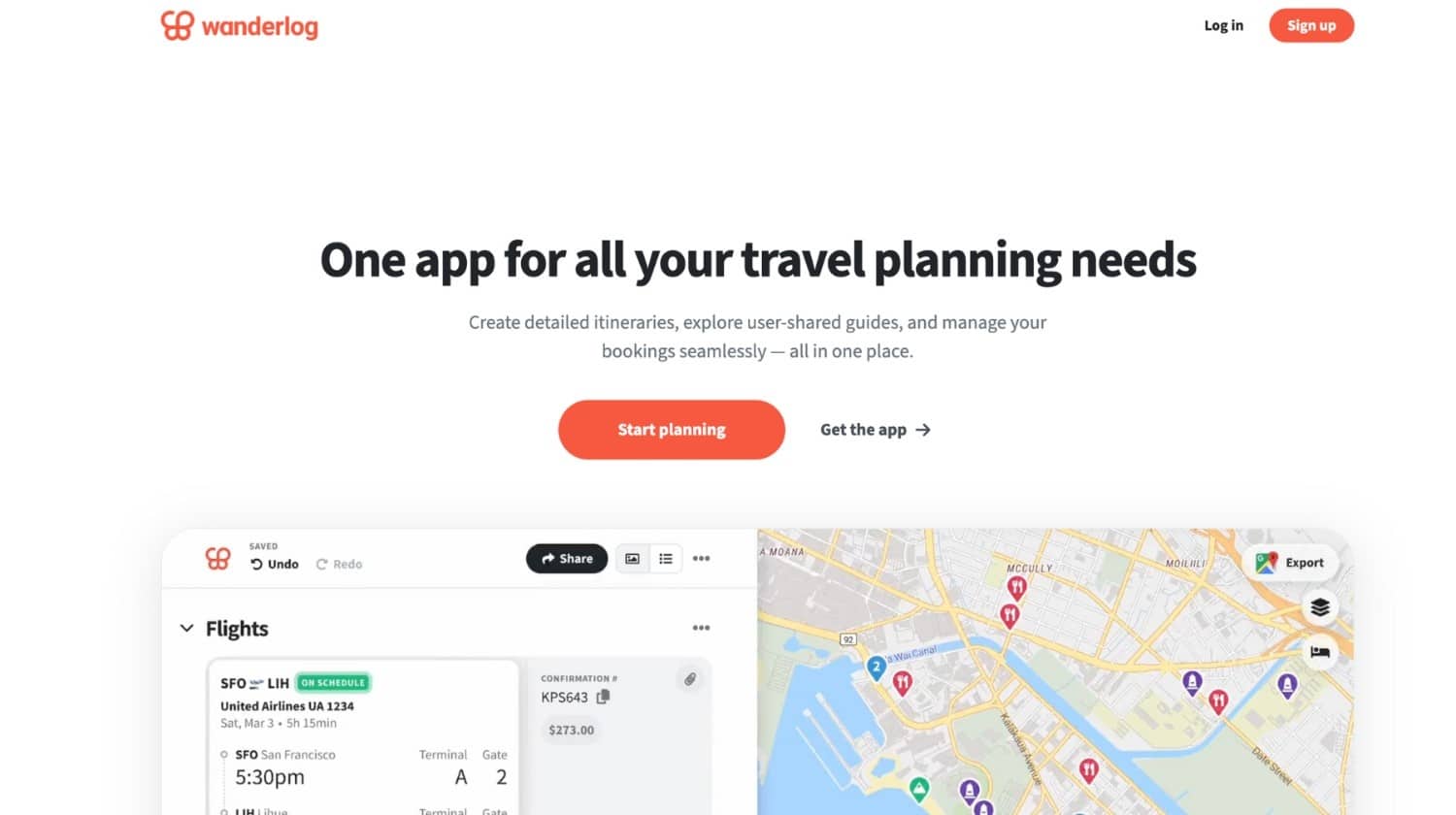
Choose Wanderlog when you’re planning with friends or family who can’t agree on anything through regular group chats.
Everyone can drag activities onto the timeline and vote on what stays or goes. No more endless WhatsApp debates.
Group Dynamics: The voting system prevents one person from dominating all decisions while keeping everyone engaged in the planning process.
Don’t rely on Wanderlog for finding obscure activities. The database isn’t as comprehensive as established platforms like Google or TripAdvisor.
Best for: Group travelers and visual planners who need collaborative features for family trips or friend getaways.
How to Build a Multi‑City Europe Trip Itinerary?
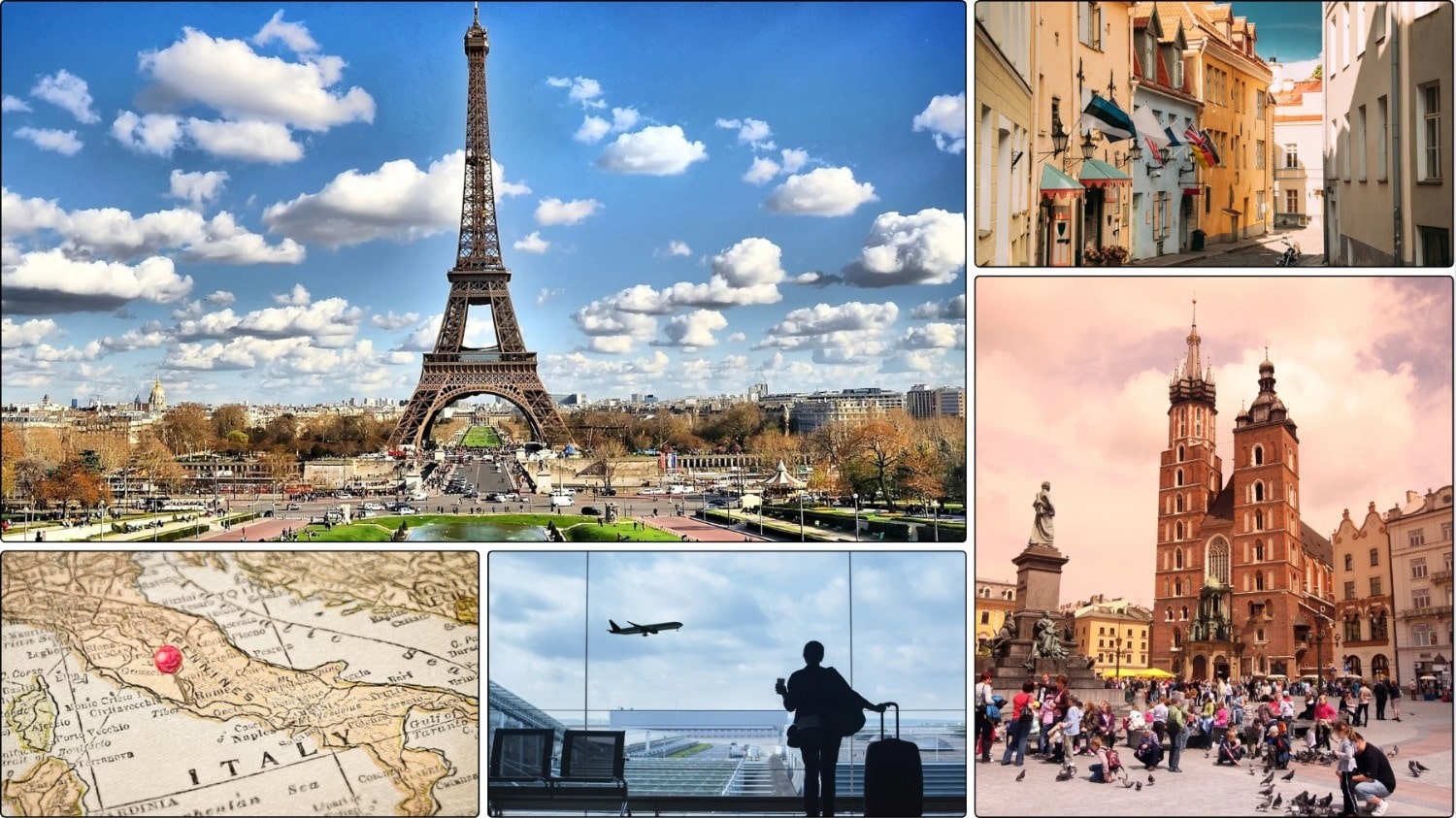
Designing a multi-city Europe trip means balancing borders, budgets, and cultures that shift with every stop. Here’s how to break it down into manageable steps that actually work.
1. Start with Your Must-See Cities
Don’t open a map yet. Grab a piece of paper and write down every European city you’ve dreamed about visiting.
Now comes the hard part – ranking them by personal importance. Not Instagram popularity or guidebook recommendations, but what genuinely excites you most.
Sample priority ranking:
- Paris (4 days) – Always wanted to see the Louvre.
- Rome (3 days) – Ancient history fascination.
- Amsterdam (2 days) – Architecture and canals.
- Prague (2 days) – Budget-friendly extension.
Time Allocation Logic: Your top-priority cities get the most days regardless of their location or size. This ensures you don’t rush through places that matter most to you.
2. Map Your Logical Route
Here’s where geography trumps your priority list. Even though Rome ranks second in importance, you might visit it last for practical reasons.
Plot all your cities on a map and look for natural flow patterns. The goal is to minimize backtracking while hitting every destination.
Efficient routing example: London → Paris → Amsterdam → Berlin → Prague → Vienna → Rome
This route follows geographical logic even though it visits Amsterdam (priority #3) before Rome (priority #2). You’ll save money and travel time this way.
Route Planning Reality: Sometimes you’ll visit lower-priority cities first simply because they’re on the way. Your priority ranking determines how long you stay, not the order you visit.
3. Factor in Realistic Travel Times
European distances look deceptively short on maps. That “quick hop” from Paris to Rome actually takes most of a day when you factor in real logistics.
Always account for airport transfers, check-in times, and getting from transport hubs to your accommodation.
| Route | Flight Time | Train Time | Recommended Choice |
|---|---|---|---|
| Paris to Amsterdam | 1.5 hours | 4 hours | Train (city center to city center) |
| Berlin to Prague | 1.5 hours | 5 hours | Flight (significant time savings) |
| Vienna to Rome | 2 hours | 14 hours | Flight (overnight train available) |
Budget airlines often use secondary airports located far from city centers. That cheap flight might require expensive shuttle buses, adding hours to your journey.
Transport Decision Logic: Choose based on total door-to-door time, not just the vehicle journey. Sometimes, slower options actually get you there faster overall.
4. Build in Recovery Days
European cities demand serious walking. You’ll hit 15,000+ steps daily without realizing it, especially in pedestrian-heavy places like Rome.
Schedule lighter days between intensive sightseeing to prevent burnout and maintain energy throughout your entire trip.
Easy Day Options: Park picnics, leisurely café hopping, market browsing, or quick museum visits focusing only on main highlights.
5. Book Accommodations by Neighborhood
Location trumps luxury in European cities every time. A basic central hotel beats a fancy suburban one, requiring long commutes daily.
Research walking distances to attractions, public transport access, evening safety, and nearby dining options before booking anywhere.
Smart Strategy: Pay extra for central locations rather than room upgrades since you’ll barely use hotel amenities during busy sightseeing days.
Key Things to Know for A Multi‑City Europe Trip
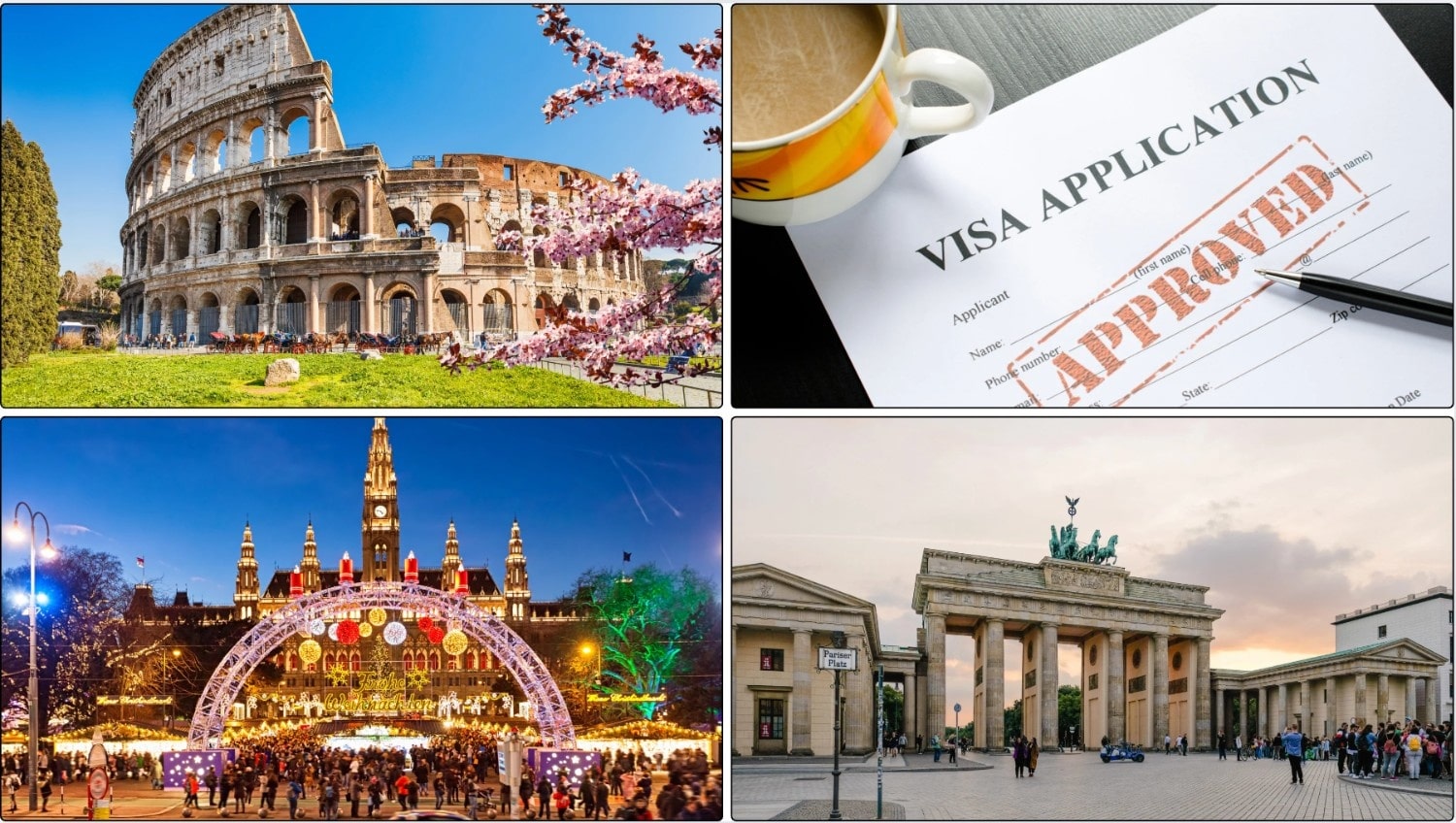
These make-or-break details shape every leg of your journey and can be the difference between a smooth trip and a logistical mess. Understanding them prevents costly mistakes and unrealistic expectations.
1. Seasonal Timing
European seasons dramatically affect both costs and crowd levels across all destinations. Your travel timing determines your budget and overall experience quality.
| Season | Weather | Crowds | Prices | Best For |
|---|---|---|---|---|
| Spring | Mild | Moderate | Medium | Comfortable sightseeing |
| Summer | Warmest | Highest | Peak | Beach and festivals |
| Fall | Comfortable | Low | Medium | Photography and walks |
| Winter | Cold | Lowest | Cheapest | Christmas markets |
Summer requires advance bookings, while winter allows spontaneous planning. Shoulder seasons balance weather with reasonable costs effectively.
- Summer brings peak prices and massive tourist crowds.
- Spring and fall offer pleasant weather with moderate pricing.
- Winter provides the lowest costs but limited daylight hours.
- Book accommodations months ahead during the summer season.
Choose your timing based on personal priorities rather than general recommendations alone.
2. Visa Requirements
Most European countries participate in the Schengen Zone, allowing seamless border crossings. This system simplifies multi-country European travel significantly.
- US citizens receive 90 visa-free days across 26 member nations.
- UK, Ireland, and Cyprus require separate visa applications.
- Track total days carefully across all Schengen countries.
- Your 90-day period starts with your first European entry.
The Schengen Zone functions as one large country for visa purposes. Overstaying can result in future European travel bans.
3. Plan Around Local Holidays
European holidays shut down cities completely, including shops and attractions. These closures are more comprehensive than typical American holidays.
Major holidays to avoid:
- Easter weekend (March/April)
- May 1st (Labor Day)
- August 15th (Assumption Day)
- Christmas week
4. Budget for City-Specific Costs
Western European cities cost significantly more than Eastern ones for identical services. Smart spending starts with knowing where your money stretches and where it evaporates fast.
- High-cost cities: London, Zurich, Oslo, Copenhagen, Paris
- Medium-cost cities: Berlin, Madrid, Rome, Amsterdam
- Budget-friendly cities: Prague, Budapest, Krakow, Lisbon
Match your budget to each city’s price reality, letting affordable stops free up cash for your must-splurge destinations.
Plan your spending strategy before booking to avoid budget surprises during your trip.
How to Stay Flexible While Traveling Europe?
European travel rarely goes exactly according to plan. Weather changes, strikes happen, and sometimes you fall in love with a city.
Book Refundable Options When Possible: Choose accommodations and transport with flexible cancellation policies, even if they cost slightly more upfront.
Download Offline Maps and Apps: European data plans can be expensive, so prepare essential navigation and translation tools before you need them.
Keep Digital and Physical Copies: Store important documents in multiple locations, including cloud storage and email, to prevent total loss scenarios.
Master European Tipping Customs: Research each destination’s tipping culture to avoid awkward social situations and ensure appropriate service appreciation.
Plan for Transport Strikes: European workers strike regularly, especially in France and Italy, so build buffer days into tight schedules.
Smart flexibility beats rigid planning every time in Europe. These strategies help you adapt quickly when unexpected opportunities or challenges arise during your trip.
The Bottom Line
European trips deserve better than last-minute chaos and overpriced bookings. The right tools make all the difference between stress and adventure.
Start with one reliable European trip planner that matches your travel style. Build your itinerary thoughtfully, considering geography and local customs.
Most importantly, stay flexible when things don’t go according to plan.
Your perfect European adventure starts with smart planning. Pick your tool, map your route, and get ready for memories that last a lifetime.
Ready to turn your European dreams into reality? Pick your preferred planning tool from the list above and start building your multi-city itinerary today.
Let me know which destinations made it onto your must-visit list in the comments!







